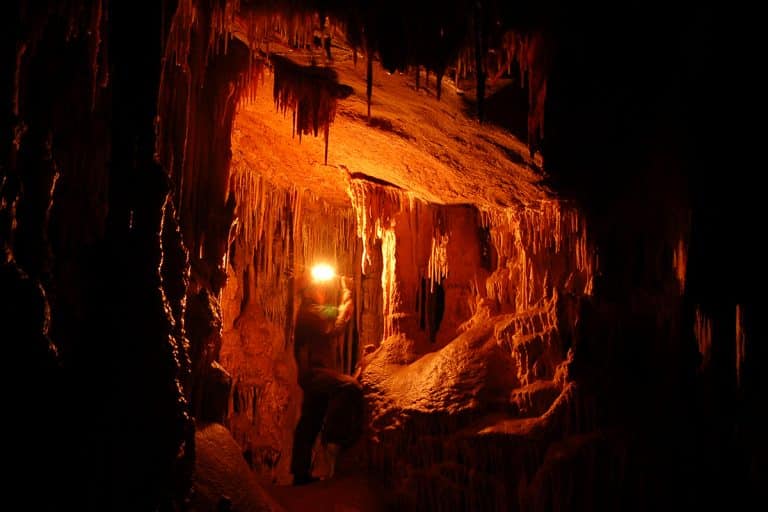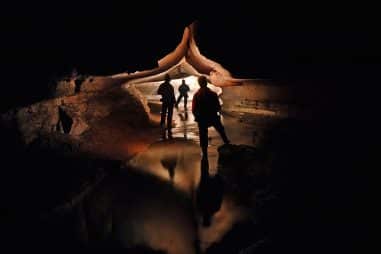It can be a very enjoyable and thrilling experience to explore caves, which is why more and more people are getting drawn to it. However, for obvious reasons, exploring a cave isn’t at all like a walk in the park. It is a very demanding task and could also be risky for those new to it. Therefore, before you can go on exploring a cave, it is necessary to master those abilities.
What is the Aim of Caving?
The aim of caving varies from person to person. For some cavers, physical or biological science is the main goal. Some go caving to document and take photos of the caves while others go caving for entertainment.
Simply put, caving is the discovery of caves. Caving aims to explore underground cave systems by gathering knowledge. It aims to discover, document, and study the caves.
What is Another Name for Caving?
In the United States, caving is also known as spelunking. In the United Kingdom, they call it potholing.
Caving, spelunking, and potholing all mean the exploration of caves. However, there is a major difference between the three. Spelunkers are often referred to as newbies while professionals call themselves cavers.
What is the Difference Between Caving and Spelunking?
Caving is the exploration of caves that are typically performed by someone who is experienced, uses professional equipment, and is prepared. Spelunking is often referred to as unprepared, amateur-caving trips.
A spelunker is commonly known as an untrained, inexperienced caver, who sees caving as a recreational pastime while a caver may be a geologist or someone who investigates caves much more seriously. That individual could perhaps have all the proper equipment to explore deep into a cave and research the rocks and environment within the cave. This may include surveying the passages and rooms of a cave and mapping them out.
What is the Difference Between Caving and Potholing?
The primary objective of potholing, a certain discipline within caving that is also sometimes called ‘vertical caving’, is to ascend and descend the ropes to reach the bottom of a cave. Caving, on the other hand, refers to the exploration of wild cave systems for a variety of different purposes be it scientific or entertainment.
The words ‘caving’ and ‘potholing’ are not unusual to be used interchangeably, but there is a major distinction between these soil formations. Most caves are made up of horizontal passages, whereas most potholes are made up of vertical passages that require more advanced equipment.
Is Caving a Sport?
Caving is considered the sport of discovering caves, abandoned mines, potholes, and other underground features, technically referred to as speleology. Caving is an adventure sport, but it is not particularly dangerous, its adherents claim.
Nevertheless, many individuals do not really understand what the sport of caving is what it entails or what you could learn from it. It is not widely regarded as such by long-time enthusiasts, who may not like the term for its connotation of disregard for safety, often classified as an ‘extreme sport’.
Is Caving Dangerous or Safe?
If you keep a few simple rules in mind and set out to be a responsible caver, caving is not especially dangerous. But if you do not plan properly, or if you go caving by yourself and explore unfamiliar cave tunnels without any company, it can be unsafe.
Typically, a cave trip is consisted of walking on uneven surfaces, creeping, crawling, squeezing, and climbing. Caves can be pretty tight and you will get stuck eventually which is why it is necessary to have someone with you whenever you go caving. If you happen to get stuck while caving, take a deep breath, stay calm, and don’t rush to free yourself because your companions will be there to assist you might you need a helping hand.
Why is Caving Dangerous?
When you are not adequately prepared, caving can be potentially unsafe. Caving can be dangerous as there are many risks involved such as falling, flooding, hypothermia, rockfall, drowning, lack of oxygen, light failure, getting stuck, getting lost, and actual weariness.
You can also get a lot of diseases from caving like histoplasmosis and pneumonia that can be contracted from bird or bat droppings. Leptospirosis is also a common disease that can be contracted from rodent urine present in rainwater throughout the caves.
How Do I Get Started in Caving?
You will not need to invest a large amount of money to go on your first caving trip. You will only need all the essential equipment and gear then you’re good to go!
To get started in caving, consider finding a caving club near you and show great enthusiasm in going on a “beginner” caving trip. Most beginner caving trips will be led by professional cavers and you will be guided so there is nothing to worry about. As long as you follow caving safety guidelines, you’ll be fine!
What Equipment Do You Need for Caving?
To make your underground experience enjoyable and worthwhile, it’s crucial that you bring the proper caving equipment with you. Here’s a list of basic caving equipment that you need:
- Helmet
- Headlamp
- Back-up headlamp
- Waist belt
- Knee pads
- Elbow pads
- Headwear
- Wet suit
- Caving undersuit
- Oversuit
- Ascenders
- Descenders
- Rope
- Harness
- Tackle bag
- Food and drink
- First aid kit
- Sleeping bag
- Sleeping pad
- Tent
Environmental conditions in caves differ greatly from one area to another and definitely from country to country, requiring the right caving equipment to be used.
What Do You Wear to Caving?
You should wear warm, comfortable, and lightweight clothing when caving because caves are typically cold. Make sure that your clothes dry easily and avoid wearing cotton as it can become too heavy when it gets wet. Although what type of gear you choose to wear all depends on your caving style, it goes without saying that wearing a helmet with a headlamp is always a must.
Here’s a thorough checklist to guarantee that you are ready for your adventure if you are wondering what to wear when caving:
- Sturdy helmet
- Appropriate clothing (coveralls or preferably caving suits)
- Solid undergarments
- Footwear (boots or hiking shoes with a strong grip and two pairs of thick socks)
- Good headlamp + two spares
- Thick gloves
- Protective elbow and knee pads
- Waterproof backpack
Caving is truly a tough sport, and your equipment will be put to the test. That is why investing in high-quality protective gear will be greatly beneficial, especially in the long run.
What Shoes Do You Wear for Caving?
The shoes you wear all comes down to your personal preference. Ones that are lightweight and flexible are the best types of shoes that you can wear when you go caving. You can wear rubber boots, combat boots, military boots, hiking shoes, or construction shoes.
Make sure that they have grips strong enough to keep you safe from slipping while caving. Before you go on your caving trip, your shoes must be well broken in. Always remember that you should be comfortable in the shoes that you are wearing to avoid accidents.
Where Can I Go Caving?
Here is a list of destinations around the world where you can go caving:
- Caves of Sagada – Philippines
- Waitomo Glowworm Caves – New Zealand
- Fingal’s Cave – Scotland
- Eisriesenwelt Ice Cave – Austria
- Sarawak Chamber – Malaysia
- Xe Bang Fai Cave – Laos
- Blue Grotto Caves – Italy
- Škocjan Cave – Slovenia
- Barton Creek Cave – Belize
- Onondaga Cave – USA
- Fantastic Cave Pit – USA
- Lascaux Caves – France
- Fingal’s Cave – Scotland
- Cave of the Swallows – Mexico.
- Cave of Crystals – Mexico
If you are a first-time caver, most beginner caving trips will be guided by experts so there is nothing to worry about. Just don’t forget to follow caving safety rules and be a responsible caver. But most importantly, you will only be there for a few hours so make the most out of it!



